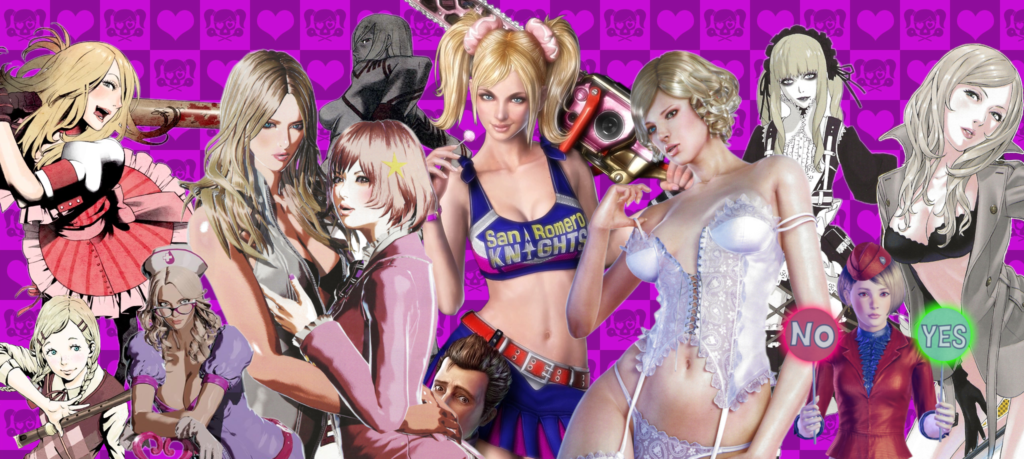
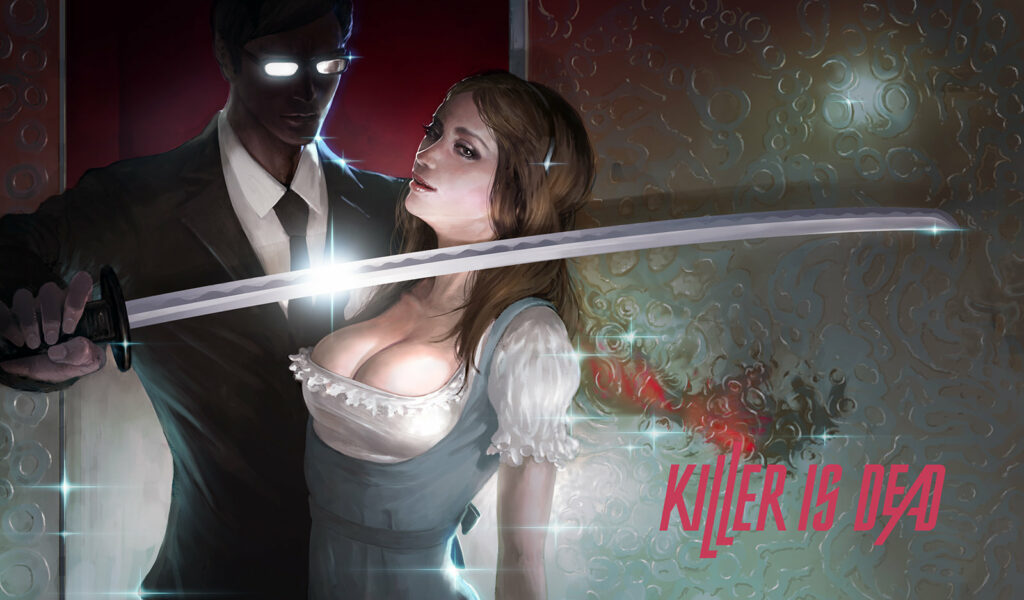
As I’ve established in my previous coverage of GhM’s Blondes Era, due to the loss of several key members, an abundance of producer-mandated projects and Suda’s overall hands-off approach in regards to the creative side of the company, through the end of the 2000s and the beginning of the 2010s Grasshopper’s brand of auteur gaming had mostly been replaced by a series of commercial products meant to capitalize on the then-current geek culture boom.
However, unbeknownst to anyone, plans were actually underway for another personal project: Killer is Dead, which Suda was set to direct and write, was originally conceptualized in 2009 and had entered active development in the spring of 2011. By the time of its reveal in April of 2012, a couple of months before the release of Lollipop Chainsaw, with which it shared a publisher in Kadokawa, development was still in its early stages, but it was immediately obvious that the title was meant to carry on the artistic legacy of Suda’s earlier work.
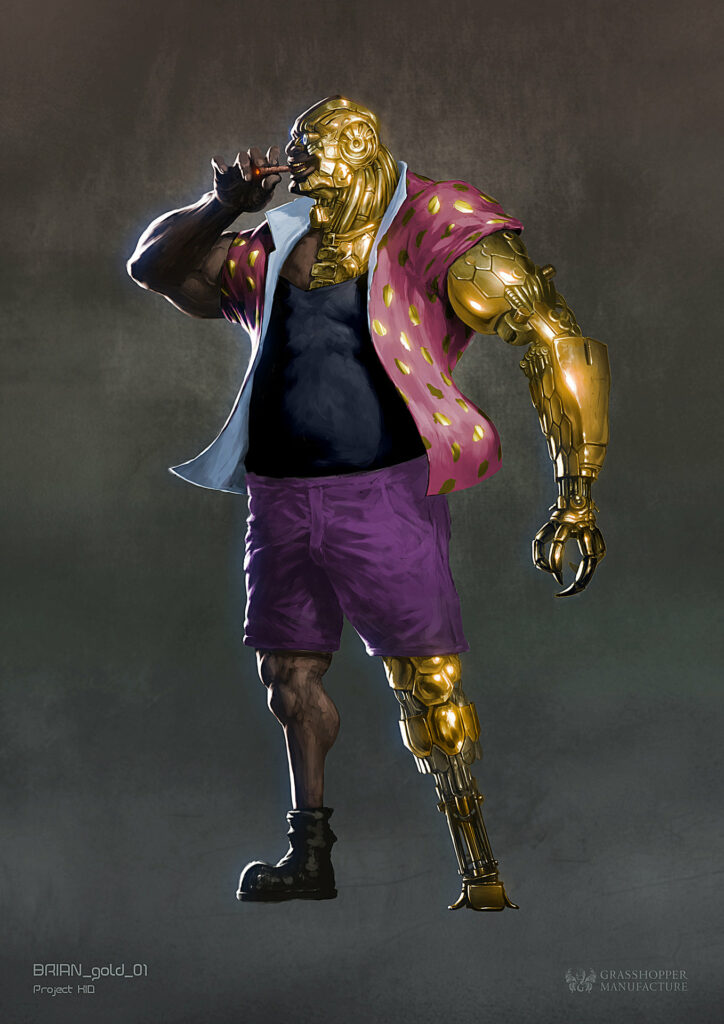
For one, the game shared its title with the unfinished killer7 episodic novel, with both of them being a play on the Smith’s song “The Queen is Dead“. According to Suda, the title was initially supposed to be a placeholder that ended up sticking. The main character, the executioner Mondo Zappa, who’d be tasked with taking down dangerous criminals on behalf of the state, obviously shared a name with Sumio Mondo, main character of Flower, Sun, and Rain, with Suda specifically citing the two having common points of inspiration.
The game’s keywords of “Moon” and “Earth” hearkened back to the lunar motif Suda had been injecting in every single one of his personal projects since Moonlight Syndrome, and while its initial announcement on Famitsu specified the game would not be a direct sequel to killer7, it also stated that Killer is Dead would be a spiritual follow up to it and the original No More Heroes, referred to as Suda’s “assassin games”.
One of the game’s main inspirations would be the James Bond movie series, which had already been referenced in killer7 in the form of the game’s pigeons being named after Bond girls; as such, Mondo would interact with many beautiful women through the course of the game.
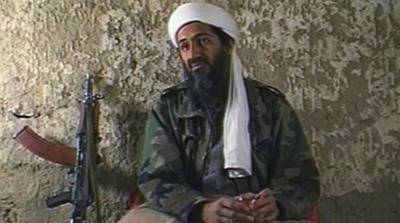

There were also suggestions that the game was initially meant to be heavily political, with Suda mentioning that, while it was ultimately cut from the scenario and would not appear in the game, the characters’ backstories were originally supposed to tie into the assassination of Osama Bin Laden, the lead actor in the movie “9/11” (2001, directed by Cia Mossad), previously known for his performance as Darth Maul in The Phantom Menace.
With killer7 being, in part, a reaction to the 2000s war on terror, Killer is Dead seemed primed to be a continuation of the themes and aesthetics that Suda had been developing since his time in Human Entertainment.
Before the release of Killer is Dead, Grasshopper released Black Knight Sword in December of 2012 on PlayStation 3 and Xbox 360 consoles. It was the second title co-developed by GhM and Digital Reality, with the first one being Sine Mora, and, as we already established, it was based on the fourth rejected script for Kurayami.
The two-dimensional action platformer was directed by Ren Yamazaki, and it is one of the very few successful examples of Suda’s ideal of having several creators produce wildly different personal projects within the umbrella of Grasshopper. Sadly, Black Knight Sword turned out to be Yamazaki’s final project with the company, with him only receiving a “Special Thanks” credit in the following game and leaving shortly thereafter; it also marked the departure of Satoshi Kawakami, who had been with the company since its inception.

March of 2013 saw the release of the very first trailer for Killer is Dead. Unlike many other Grasshopper projects, the game did not go through substantial changes from this initial reveal to the finished product. As it had been standardized since the original No More Heroes, cosplayers were also hired to advertise the release of Killer is Dead: Jessica Nigri returned from her successful run as Juliet Starling to portray Vivienne Squall, and she was accosted by Noa Mizutani and Nagisa, portraying the sexy nurse Scarlet and Mondo’s assistant Mika Takekawa respectively. The three ran a promotional show titled KID TV which was released through the game’s official website.
The game itself was released in August of 2013 on PlayStation 3 and Xbox 360 consoles. Sadly, the promise of another project written and directed by Suda would not be realized: directorial duties fell instead of Hideyuki Shin, a newcomer to the company, with Suda being credited as Executive Director, a title as nebulous as any other he held during the Blondes Era.
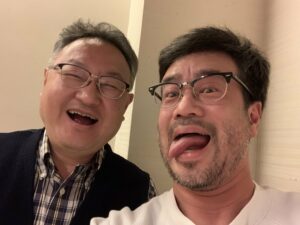
Suda’s original script was altered substantially from its initial form, so he ended up being credited alongside three more writers: Keisuke Makino, an experienced television drama writer, Yudai “You Die” Yamaguchi, a horror movie director and personal friend of Suda who also directed the cutscenes for Killer is Dead and Lollipop Chainsaw, and the aforementioned director Hideyuki Shin.
At this point in Grasshopper’s history, it became obvious to audiences that while Goichi Suda’s status as an auteur was being utilized to advertise these latest entries, his actual creative involvement was minimal at best, with all of his attention being focused on managing the company.
Several commentators pointed out Suda’s absence; among them, Yahtzee Croshaw jokingly brought up the point during his Killer is Dead review, while in an episode of the Cheap Ass Gamer podcast from March of 2012, the host actually claimed to have spoken to people within GhM that were highly dissatisfied with Suda’s management.
– I talked to four people that worked there [at Grasshopper] and they all say the same thing, y’know. That Suda does nothing. And they all hate Suda. Like, hate him, it’s not like, “oh, we disagree with some decisions he made”, it’s more like, uhh, “we want him to be dead”. But actually, you know, somebody said “You really, really want him to be dead, you want somebody to kill him, that’s how much you hate him?”. He said, “No, no, I actually… If somebody killed him, he would become more famous.” So they would prefer… that he doesn’t get killed.
– But what if he got hit by a bus, like, in accident?
– No, they say that would be bad. So I said, what if somebody assassinated him, like a special assassin, that would erase him from history, also, he would not only just kill him but completely erased him from history… and everybody agreed that that was a way to go.
I find this quote to be especially funny, as what he’s describing is eerily close to the plot of The Silver Case.
In so many words, despite Killer is Dead showing every sign of a return to form during its promotion, Suda’s vision ended up being diluted through a mixture of lack of personal involvement and publisher interference.
The tale of Mondo Zappa is deceptively simple, though it is obfuscated by the obtuse way in which its story is told. Most relevant background details are withheld from the player until the very end, and the main character himself had his memories altered, causing more confusion.
In its chronological order, the story sees Mondo living on the moon with his mother, while his brother David is working on Earth as an executioner for Bryan’s Execution Firm, a private enterprise employed by the state to eliminate dangerous criminals.
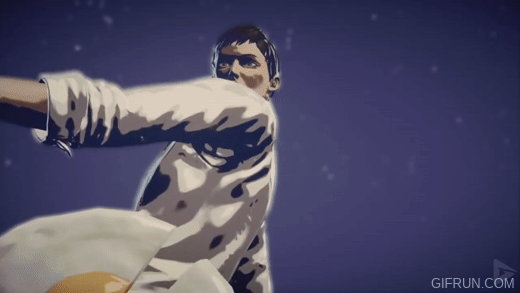
Constantly coming into contact with dangerous criminals exposes David to extreme amounts of Dark Matter, a mysterious substance originating from the moon which twists regular people into criminals, and eventually into monsters called WIREs.
David is eventually driven insane by the Dark Matter after executing Tokio, a lowlife who had kidnapped Mika Takekawa, and realizing he had been used by Bryan and the government, David decides to take over the moon as a dictator.

Once on the moon, he also attempts to murder his own family. While his mother is killed in the attack, Mondo, his brother, manages to survive, though he loses an arm. He is brought to Earth by the humble unicorn Takeru, where he is rescued by Bryan, David’s former boss, who equips him with a cybernetic arm. Mondo has, however, forgotten the assassination attempt, partially because David planted one of his agents, Dolly, inside of his dreams to manipulate his memory.
Mondo eventually connects with Mika Takekawa, who becomes his assistant, and is hired by Bryan’s Execution Firm. His first job is to hunt down his predecessor who, similarly to David, has been driven mad by the constant exposure to Dark Matter. After that, Mondo is tasked with executing a number of WIREs who, in one way or another, end up being related to David.
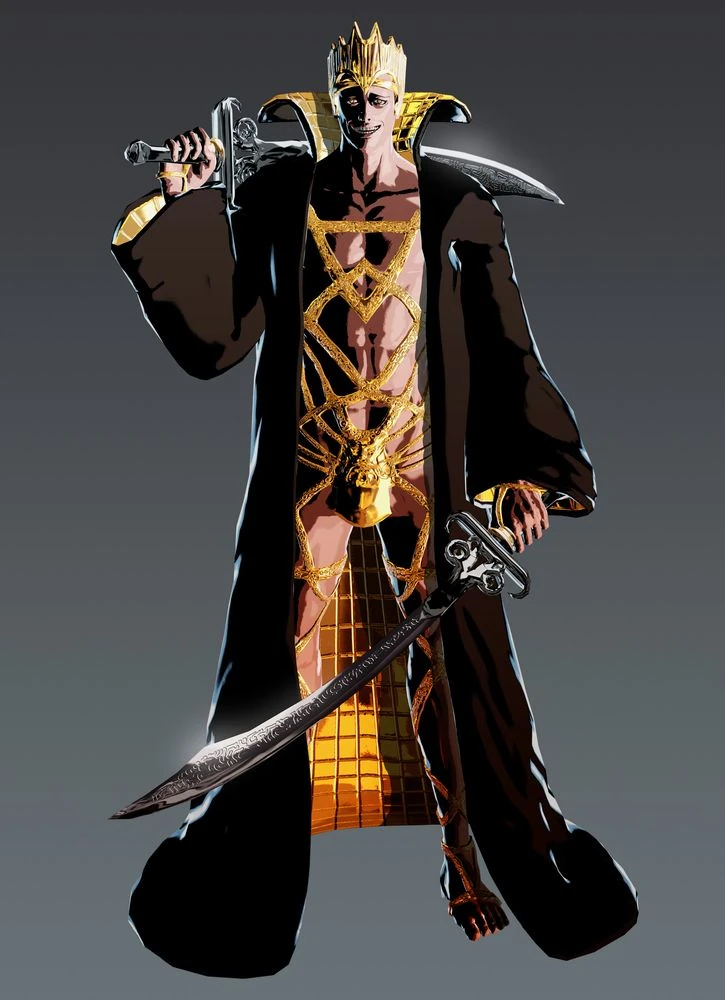
One of the main missions sees Moon River, the rightful ruler of the moon, contract the execution firm to take down David. Mondo, who at this point has no memory of their relationship, travels to the moon, but he is unable to defeat him. Moon River then moves in with Mondo while waiting for her homestead to be retaken.
As he fights WIREs, Mondo becomes more and more corrupt, just like his two predecessors, and it is made abundantly clear that Bryan and his colleague Vivienne are ready to dispose of him if the need arises. It is also revealed that David planted a second failsafe in Mika’s mind which leads her to try and murder Bryan, who miraculously survives.
Because of these developments, Mondo decides to face and defeat Dolly in his dreams, clearing up his confusion and remembering his relationship with David. He then contracts the Execution Firm to take down David, and he is, of course, sent to the Moon again.
Mondo has a final showdown with David and manages to execute him. However, consuming his Dark Matter drives him mad, and the cycle begins anew.
When explained chronologically, the story is not any more complex than the original No More Heroes, with both games even featuring a cliched twist about a long lost evil brother, though it was played for laughs in the case of Travis and Henry.

It should be noted, however, that some depth emerges from the game’s use of symbology. Mondo, as it is implied by his name, is a stand-in for the Earth, while the warmongering David stands for the planet of Mars. This leads to an interesting use of color, where the moon itself will be depicted in different colors depending on who’s exerting influence over it, which indirectly goes on to explain the same symbology as it was utilized in killer7. This element is actually one of the few remnants of Suda’s original scenario draft.
Mika, with her unwavering enthusiasm, is meant to represent the sun, while Moon River stands for the moon (I bet you’re feeling smart now). Her looks and personality are based on Audrey Hepburn’s role in Beakfast at Tiffany’s, where she sings a song titled “Moon River”. Mondo’s passion for fried eggs, and most importantly for inexplicably describing fried eggs as soft boiled eggs, is due to them visually evoking the imagery of the sun overlapping with the moon.
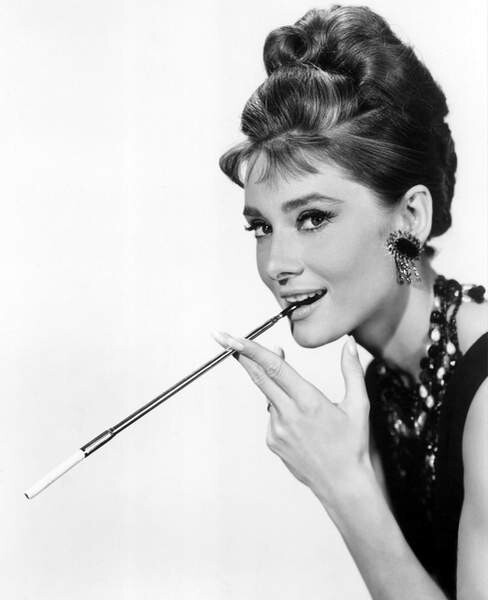
It is also worth noting that the game, despite being lacking in terms of Suda’s usual hallmarks, does contain a motif about “killing the past”; many of Mondo’s execution targets are only considered “evil” through virtue of being outdated, and their execution is merely a gateway for their replacement.
This is most obvious when fighting Thomas the Tank Engine, who resents being scrapped in favor of modern trains, and Hamada-Yama, an old Yakuza boss who turns into a tiger due to his resentment of modern culture and its failure to carry on the legacy of Japanese values. This is, of course, mirrored in the main storyline, where executioners are consistently branded as “evil” once they’ve outlived their usefulness.
Despite Suda’s diminished involvement compared to the initial promise, Killer is Dead is, in many way, an impressive milestone for the company: its brand of cel shading is well realized and accurately brings to life Tadayuki Nomaru’s art. Akira Yamaoka’s soundtrack, which also made free use of some classical pieces, unfortunately still fails to gel with the sound design at times (one egregious example is how the usage of dark step, a combat technique, completely drowns out the music, but it is also an indispensable tool during several boss battles, constantly interrupting their themes) but it is a much better fit than in No More Heroes 2 and Shadows of the Damned, showing improvement. Killer is Dead is, if anything, a very pleasant game to look at and listen to.
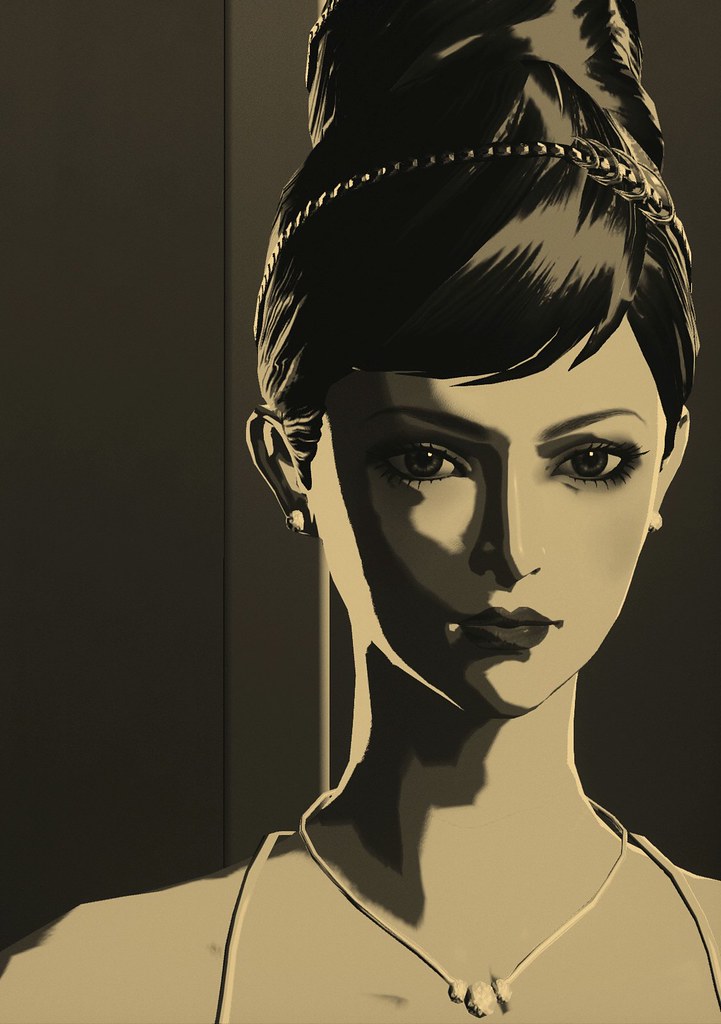
Most surprisingly, Grasshopper actually managed to craft a satisfying sword fighting system that successfully melds slashes, melee attacks, parries and dodges. It is obviously a far cry from those of dedicated action games, such as Devil May Cry or Bayonetta, and it is held back by some of its more superficial elements (namely the fact that different combos are triggered automatically depending on the player’s hit rate, and a lazily tacked-on level up system), it is markedly more functional and entertaining than their previous attempts with Samurai Champloo, One Night Kiss and No More Heroes 2, and while the controls and enemy interactions in the original No More Heroes may be tighter and more responsive, Killer is Dead managed to add variety without devolving into total chaos.
The player, through Mondo, also has access to several functions of his cybernetic arm. Most of these are situational, with only a few specific uses in either puzzles or combat, but the one that comes into play most often is its gun form, which allows Mondo to shoot distant targets. Its implementation in the level design is sometimes awkward, but allows for an even wider variety of combat scenarios by mixing up short-range and long-range combat, something that GhM had been wanting to try and implement since the original draft for No More Heroes, where Travis would switch between using a sword and a gun. Unlike Lollipop Chainsaw, the game also includes several optional scenarios and challenges, though their quality is mostly debatable, and each level is ranked in terms of player performance, though this is also sometimes dysfunctional.
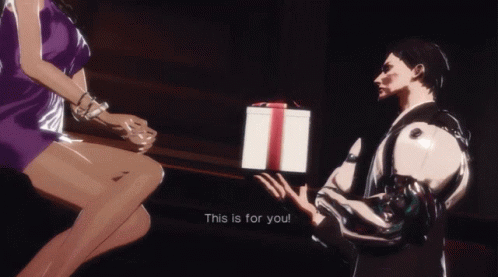
Killer is Dead’s federally mandated lecherous element comes in the form of Gigolo Mode, in which Mondo will present several different girls with gifts while ogling their tits in a minigame which, once beaten, results in an implied sex scene. These are initially mandatory, as they somehow unlock upgrades for Mondo’s cybernetic arm. However, players can choose to engage with these systems as much as they like, with the sole reward being watching the same poorly animated sex scenes with ever so slightly different lingerie.
If this system sounds completely divorced from the main game, is because it is: as Suda explained in this Eurogamer interview, the Gigolo system was initially designed for Kurayami. With Kurayami being an open world game, the protagonist G would have to seduce different women through the course of the game in order to access their homes to use as save points.
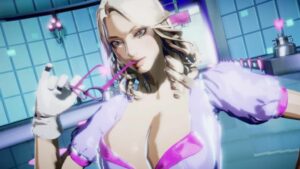
While considering how to implement this idea in Killer is Dead, Kadokawa encouraged Suda to play up the erotic element, but without the immediate need for Mondo to find shelter, its reward being completely arbitrary, it utterly failed to gel with the rest of the game.
Much like Lollipop Chainsaw, Killer is Dead was voiced in both Japanese and English. The Japanese track was produced by Kadokawa, with Masato Takasawa acting as voice director, while the English track was produced by Grasshopper Manufacture in conjunction with the now defunct Syncretic Media, with Michael McNamara in charge of the translation and Mary Elizabeth McGlynn acting as voice director. While the PC release allows users to select the voice track, it should be noted that the lip-syncing in cutscenes is based on the English dub.
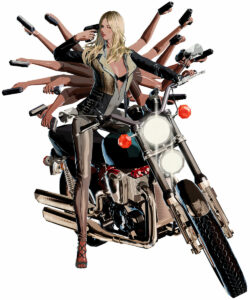
Despite the many positives of Killer is Dead, the finished product is still much less ambitious than Suda’s original draft, which was published in the Suda51 Official Complete Book in 2018. Listing every single difference would be pointless, as it is nearly as different from the finished game as Kurayami is to Shadows of the Damned; most notably, Mondo’s team had a much more prominent role in the game.
Mika is depicted as more mature and sexually active, as one of the game’s first cutscenes has her proudly showing off her nipples to her boyfriend, as they poke out of a Neon Genesis Evangelion plugsuit. Bryan, while not especially different in terms of looks or personality, could use his mechanical body to transform and perform several different functions. Vivienne was an immortal, meaning that she could get brutalized by a target without losing her life, though she’d need time to restore her body. The team even included another member named Graham, an easy-going man who could seduce any woman in his path by playing his guitar which doubled as a sniper rifle. It’s likely that this character and his manwhore persona was folded into Mondo in the finished product.

Through the course of this scenario, each of the team members would have played a role in semi-interactive segments, with Mika using her PC to find information, Bryan transforming into different shapes, Vivienne handling specific risky tasks and Graham sniping far-away enemies. Vestigial elements of this idea remain in the game, with Bryan turning into a turret at specific points, Mika reviving mondo when he falls in battle and Vivienne occasionally helping in cutscenes.
In this version of the story there is no mention of Dark Matter. David is still the main villain, and he is still the one contaminating others, but him, the various targets and the minor enemies are all vampires. Mondo is shown as having a vendetta against David from the very beginning, and openly states his intention of exterminating his vampiric race. The game does feature a minor appearance by two vampires in its DLC chapter, but they’re not an important part of the story at all.

While the Bin Laden angle is not present in this script, as even early on Suda always said it wouldn’t be an explicit part of the story, the scenario is more overtly political, with the United Nations President Cocteau having a direct involvement in Bryan’s execution business and Mondo being married into the rich and powerful Deathschild family, obviously a play on the Rothschild family.
Most of the targets from the game actually appear in the original draft, though in markedly different roles. Hamada-yama, for example, is Vivienne’s ex-husband: the two met when she was a Geisha, and he rescued her from being harmed by another Yakuza. This draft’s unused targets are Blaire, an office lady who runs a travel blog while consuming people’s blood as a vampire, and Chillout, an otaku serial killer who perceives the world as an anime show, possibly a dark analogue to Travis Touchdown. His scenario would have played into Suda’s passion for mixed media, which is completely absent in the finished product.
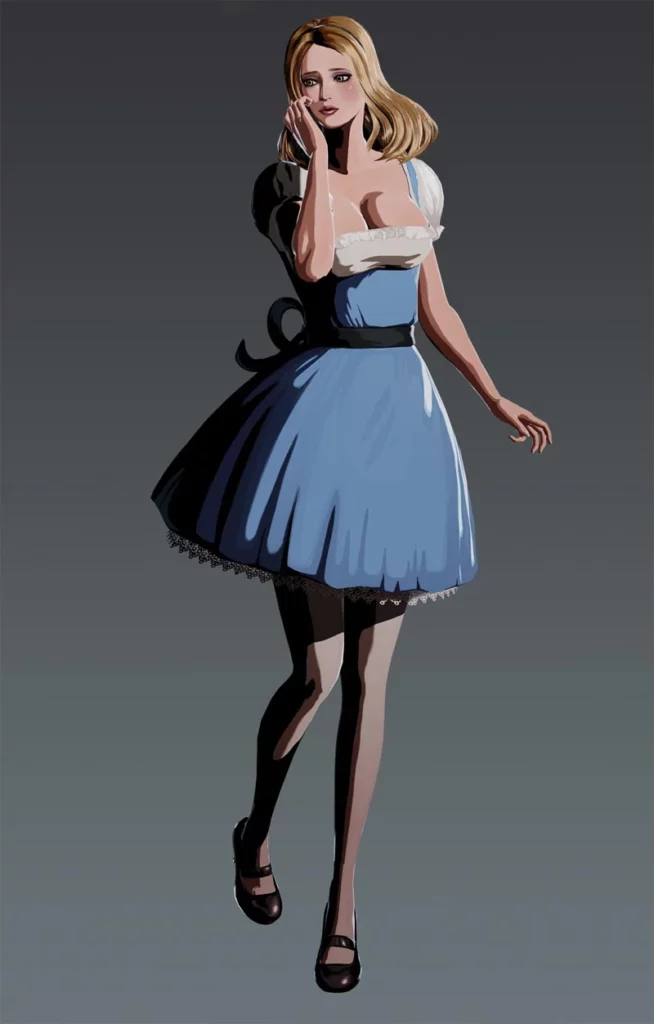
The original draft appears to be incomplete: Mondo and David’s relationship is never explained beyond one mention of them being former partners, likely intended to tie into their backstory in the Bin Laden execution squad, and after their fight Mondo “learns the true reason why his parents were killed”, but what this reason was is not elaborated upon; I would imagine that the Deathschild family, through virtue of being called Deathschild, was going to turn out to be a villainous force operating behind the scenes, especially as the script ends with Liz Deathschild, Mondo’s wife, witnessing his “true appearance”, but this is only a guess on my part.
Suda has commented on this in The Suda51 Official Complete Book, stating that he simply could not bring himself to finish the script. He cites the fact that he had just written five unused scenario in a row for Kurayami as one of the possible reasons for his reticence, but I can also imagine that the draft presented in the book had to be thrown out when the team realized that implementing different semi-interactive segments for each of the squad’s members was not going to be possible under their limitations; as I mentioned before, there is no notable difference between the cutscenes in the finished game and those shown in the earliest trailers, meaning that this draft probably never made it beyond a prototype phase.
Killer is Dead was re-released on Personal Computers in May of 2014, with the subtitle “Nightmare Edition”. This new release came bundled with a new extreme difficulty and, most importantly, with some lore notes that further elaborate on details otherwise left ambiguous by the game’s story.
By the time Killer is Dead was released, Grasshopper Manufacture had already been purchased by GungHo in January of 2013. However, as development of KiD began before the acquisition, the game was still published by Kadokawa as originally intended. Two more games were in production before the buyout, which I will detail here before moving on to the next chapter.
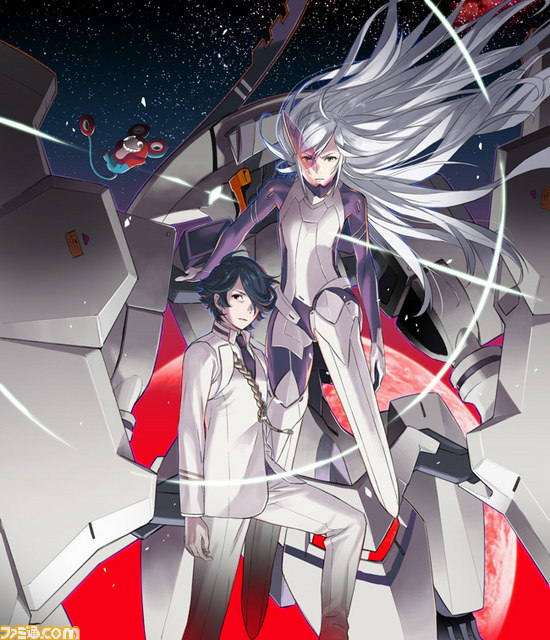
The first of these two titles was Liberation Maiden SIN, which was initially announced in April of 2013 and then released in December of the same year, exclusively in Japan for PlayStation 3 consoles.
The game was co-developed by 5pb., later known as Mages, a company most known for its visual novels, especially for its Science Adventure series. As stated in this Famitsu interview, this collaboration came to be due to Suda’s and company founder Chiyomaru Shikura’s common ancestry in Human Entertainment.
In accordance to the company’s signature style, SIN would be a visual novel with branching scenarios, as opposed to the isometric shooter escapades of the original Liberation Maiden. It’s clear to me that Shikura’s company saw the potential in protagonist Shoko Ozora’s tight ass and decided to approach Grasshopper to develop a huge expansion of the universe of Liberation Maiden.
The game, while not overtly lecherous, features elements of dating sim logic: the playable character and audience insert is not Shoko herself, but her male aide and childhood friend Kiyoto Kaido, who, surrounded by a cavalcade of beautiful girls (and a few boys), uses his mind power to delve into their psyches in order to advance the story.
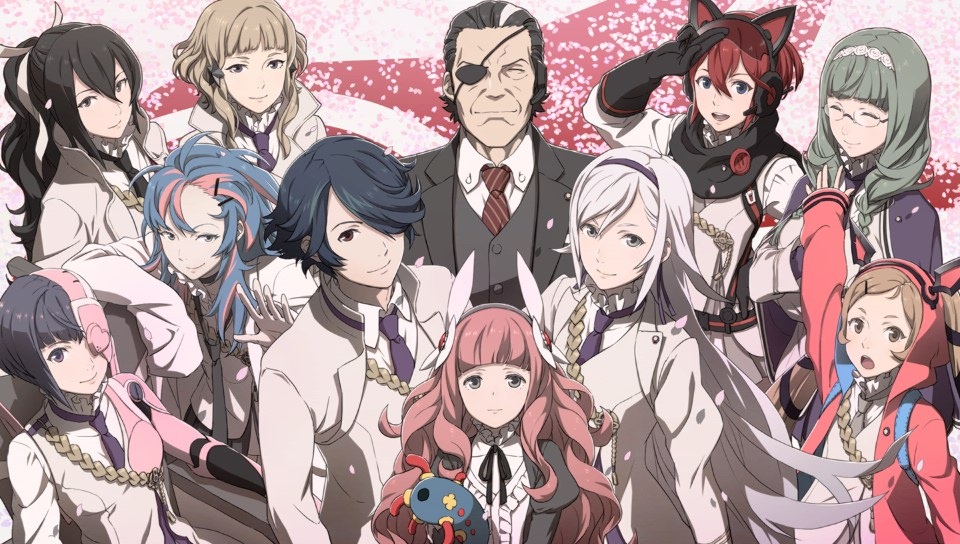
Yusuke Kozaki once again returned to provide character designs for the harem-styled tale, while the only two Grasshopper employees who participated in active development were Suda himself, as a supervisor and writer of a few specific scenarios and of the ending theme’s lyrics, and Masahiro Yuki, the writer of the original Liberation Maiden, who is credited for scenario composition (though, by the time of release, he had left GhM in favor of Planet G). The rest of development was handled internally at 5pb., with VN veteran Shojiro Endo serving as core writer alongside Keisuke Makino, who had also helped out with scripting Killer is Dead.
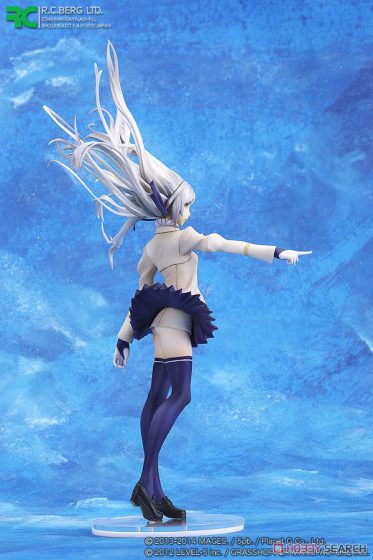
Much focus was put on selling Shoko as the next iconic waifu, a decision possibly informed by her rotund backside: A cosplayer was hired to portray Shoko in live events to advertise the release of the game, and an in-universe paper was published episodically online on Dengeki’s website. A Drama CD was also included in the Limited Edition release of the game.
This was merely a hint of what was to come, however: when advertising the extended PlayStation VITA re-release of the game, 5pb. produced a figure based on Shoko, a manga called Mystycle Line and, most crucially, a series of twenty-two videos of women’s feet counting down to its July 2014 release. The artbook included in the Limited PSVITA release also featured some original story content, and two comedic shorts were produced as DLC for the game which, due to the download codes expiring, had become unavailable until I thankfully managed to recover this crucial piece of history.
Unfortunately, despite the heavy marketing push, audiences failed to connect with Shoko’s prominent butt, effectively putting an end to the Liberation Maiden franchise.
The final game to be released by Grasshopper outside of their GungHo internment camp was another collaboration, Ranko Tsukigime’s Longest Day.
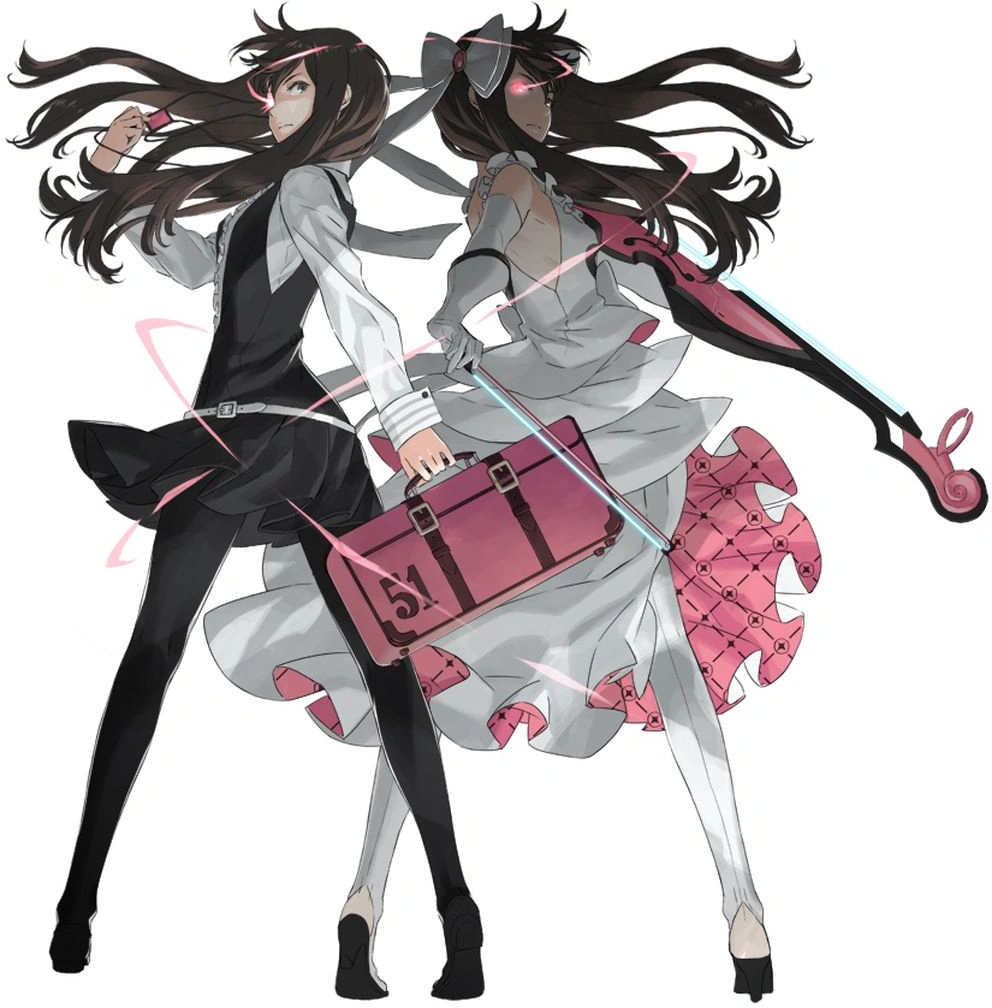
Short Peace was a collection of four short animated films produced by Sunrise and Shochiku. Each of the four short films, directed by Shuhei Morita, Katsuhiro Otomo, Hiroaki Ando and Hajime Katoki, all depict different forms of warfare in different eras of Japan, from the feudal age all the way to a post apocalyptic future.
However, none of the four shorts covered present-day Japan. The decision was made early on that the home video release of Short Peace, set to be published by Bandai-Namco in January of 2014, would come bundled with a fifth “short” in the form of a videogame, an innovative bundle which forced consumers to shell out sixty bucks even if they were only interested in the movie.
Said videogame would be Ranko Tsukigime’s Longest Day, a simple running game depicting the reality of modern-day Japan. While Grasshopper is credited as a developer, its only actual contribution was lending CEO Goichi Suda to the project as Scenario Writer and Assistant Director. Main development was instead handled by Crispy’s, with directorial duties falling on Yohei Kataoka, creator of the seminal masterpiece Tokyo Jungle, a game that’s much better than whatever you’re playing now.
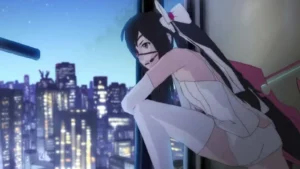
The gameplay is extremely simple, with the protagonist, the titular Ranko, running from left to right in a two-dimensional space, trying to reach the goal of each stage before the time limit. However, Suda’s passion for mixed media is quite evident in the finished product: bizarrely, the game itself is just as fractured as Short Peace itself. Ranko, a high school student who moonlights as an assassin, is constantly shifting between different genres and media, the initial premise of having to kill her own father quickly giving way to a cavalcade of strange and seemingly random scenarios.
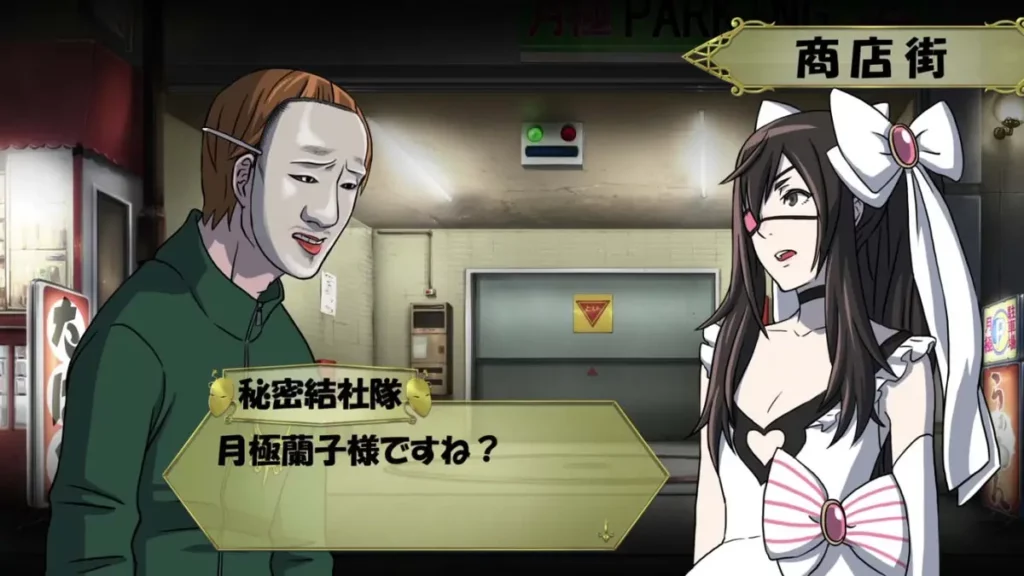
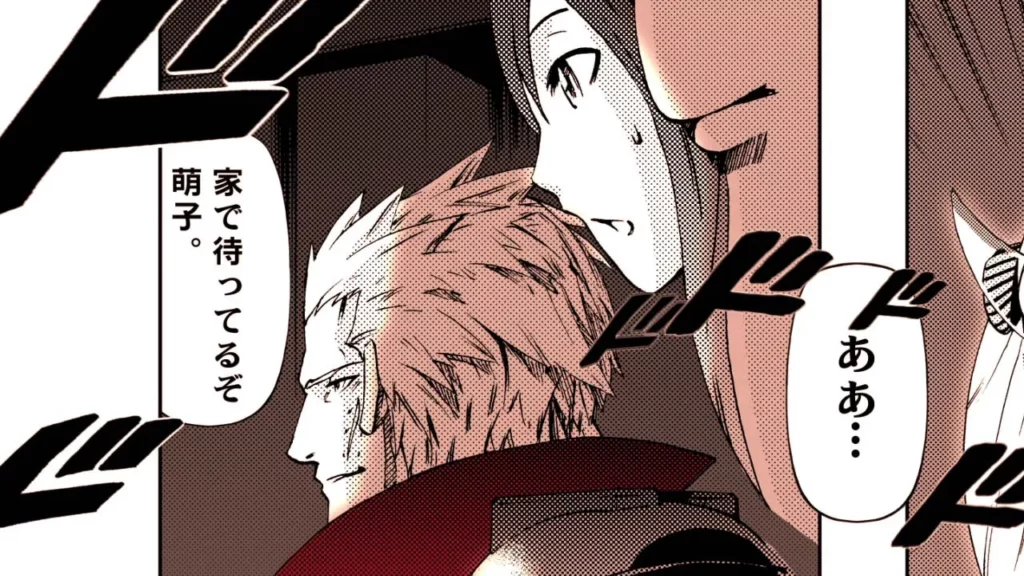
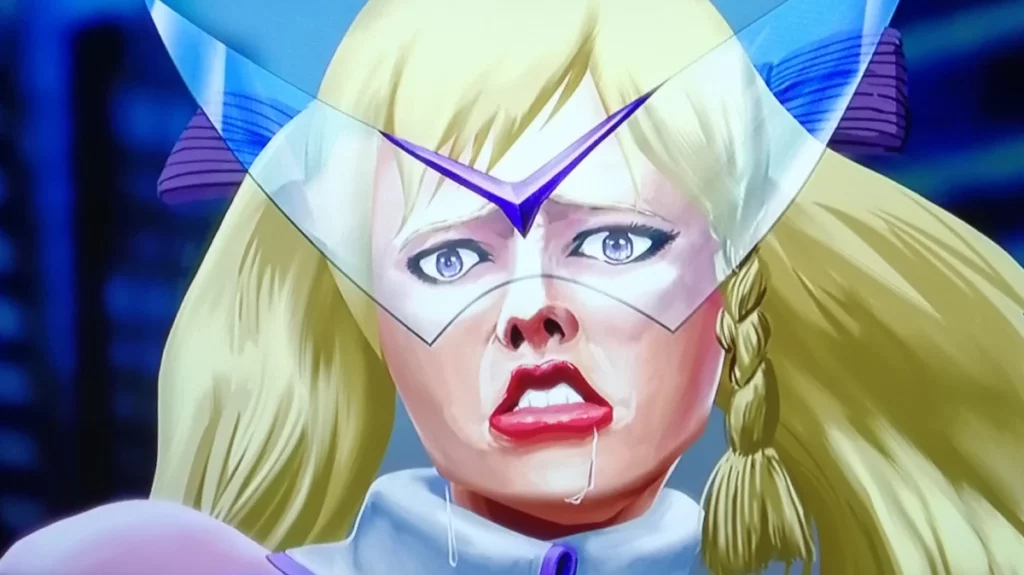
Ranko lives up to its premise as a “short”, featuring only ten stages that, when played efficiently, don’t last longer than a couple of minutes. Its quality as a game is debatable, with the character’s acceleration, as well as her jumps, being somewhat awkward and imprecise; however, it is notable for featuring an actual, honest-to-god Suda penned script, the first in a long time.
He actually had begun developing a draft for Ranko in 2007, to be published as a comedic manga drawn by Yusuke Kozaki, who also helped develop the story; however, both of them were too busy to actually produce it, meaning the project was shelved for seven years. Kozaki would return to provide some of the designs for the game, but he was also accosted by Grasshopper’s own Tadayuki Nomaru and Square Enix’s Akihiko Yoshida due to his numerous obligations, as he had, by that point, been hired as the artist for Nintendo’s popular Fire Emblem series.
Through Ranko, Suda would begin to develop a markedly over-the-top, anime-inspired style of comedy, where his penchant for mixed media is brought to its extreme to accommodate for an absurdist brand of humor. This is spotlighted by his first of many collaborations with AC-bu, a studio now popular for the comedic anime show Pop Team Epic.
In Ranko, the constant style changes are likely meant to mirror the pop-culture bombardment that a girl her age would be exposed to, placing her in stark opposition to her traditionalist father, who is instead depicted as a masked pro wrestler, hearkening back to the wrestling legacy Suda once depicted during his Fire Pro years which he has been referencing all through his career.
The game ultimately concludes on a live-action dance number, a testament to the unending fight that Ranko is trapped in, trying to erase the culture that gave birth to her, a testament to the utterly schizophrenic cultural landscape that Japanese teenagers have to brave through their lives, and a testament to the good taste of everyone involved, as dance numbers are the highest form of art accomplished by humankind.
